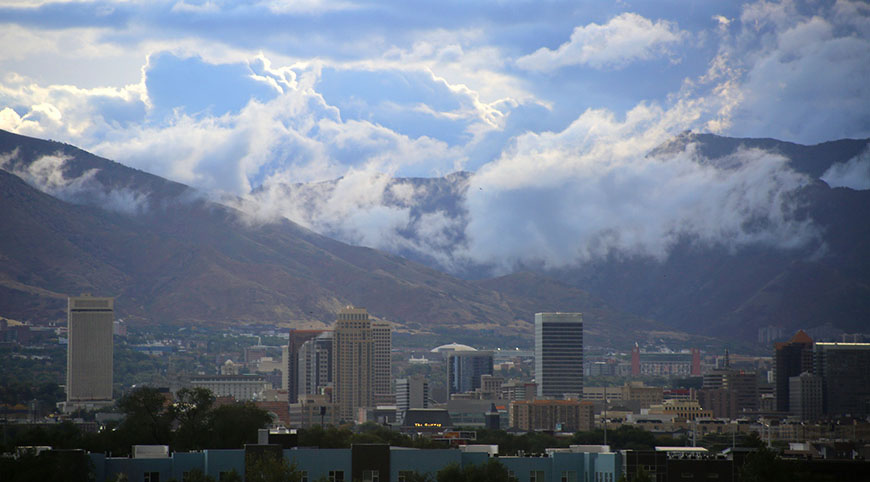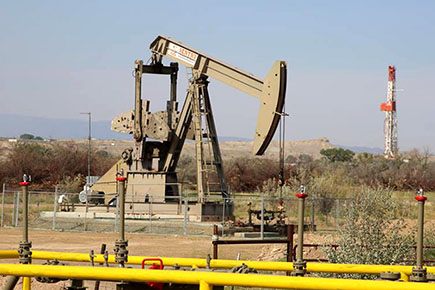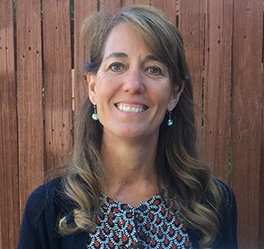
The Wood-Burn Program

The Wood-Burn Program is designed to prevent particle pollution by restricting or banning wood burning during inversion periods. Emissions from wood-burning stoves and fireplaces contribute to the particulate pollution that builds up during temperature inversions.
Inversions form when a dense layer of cold air is trapped under a layer of warm air. The warm air acts like a lid, trapping pollutants in the cold air near the valley floor. The mountains act like a bowl, keeping the cold air—and the pollutants in it— in the valleys. Wood burn restrictions are a proactive measure that can reduce the levels of particulates emitted both immediately before and during inversions.
Impacts from Wood Smoke
Because wood doesn’t burn completely, wood smoke contains a wide range of harmful substances. Pollutants in wood smoke include particulates, volatile organic compounds (VOCs), and hazardous air pollutants (HAPs), some of which are toxic or considered carcinogenic. These pollutants include:
- Benzene
- Formaldehyde
- Carbon monoxide
- Nitrogen dioxide
- Particulates
- Polycyclic aromatic hydrocarbons (PAH)
- Sulfur dioxide
The poor air circulation that typifies inversions keeps wood smoke close to the ground where it can enter homes and businesses. The fine particle pollutants from wood burning are so small that even well-insulated houses can’t keep them out. Scientific studies have shown that particle pollution levels inside homes reach up to 70 percent of the pollution levels outdoors. Studies have also shown that people using wood-burning stoves and fireplaces to heat their homes are regularly exposed to high levels of fine particulate matter in their indoor air, particularly if there is little fresh air circulating inside the house.
Air-Quality Alert System
Three basic symbols indicate unrestricted, voluntary and mandatory actions.
- Unrestricted Action (circle): Wood- and coal-burning stoves or fireplaces may be used but in a proper manner to reduce smoke emissions.
- Voluntary Action (inverted triangle): Residents are asked, on a voluntary basis, to not use wood and coal burning stoves or fireplaces and reduce vehicle use by consolidating trips. Industry should optimize operating conditions to minimize air-pollution emissions.
- Mandatory Action (X): Residents are prohibited from using wood- and coal-burning stoves or fireplaces and asked to reduce vehicle use by consolidating trips. Industry should optimize operating conditions to minimize air pollution emissions.
How to Reduce Wood Smoke Emissions
The public can take the following simple steps to reduce the impacts of wood smoke, particularly during inversions:
- Inversion Toolkit.
- Check the Current Conditions for action alerts before you burn.
- Don’t burn wood on voluntary action days.
- Consider switching to a natural gas fireplace. Apply at the Wood Stove Conversion Assistance Program.
- File an electronic complaint form with DAQ to report those burning wood on mandatory no-burn days.
Compliance Enforcement Cycle and Inspection Data
Ever wonder how the Division of Air Quality (DAQ) confirms that a facility is satisfying the requirements of its permi t? Each permitted facility has to comply with a very long list of conditions that protect air quality, including the installation of specific pollution-control equipment , compliance with emission levels established in the permit, monitoring, record-keeping, and systematic reporting. The Compliance Section inspects facilities on a regular basis to ensure that they are meeting the conditions in their permit. Most air quality inspections are “no notice,” meaning the facility isn’t told in advance that we’re coming. After the inspection, any potential deviations from the permit and/or approval order and corrective actions are discussed with the contact person and, if needed, the plant manager. The contact person receives a copy of a visible emission observations and compliance status notes.
If the facility is found in violation of its permit and/or approval order, the facility is tracked to ensure that it has implemented all corrective actions and ascertain when it has come back into compliance. DAQ has a penalty policy that is used to address fines for violations.
Oil and Gas Sources – Sign up for CAERS Information!

Oil & gas sources operating on lands under state jurisdiction within the State of Utah are required to register with the Utah Division of Air Quality (UDAQ) in accordance with R307-505. The registration requirement applies to new and existing industries involved in oil and natural gas exploration, production, and transmission operations; well production facilities; natural gas compressor stations; natural gas processing plants and commercial oil and gas disposal wells, and evaporation ponds. Sources with a current approval order are exempt from registration. Completed registration workbooks may be submitted through the Centralized Air Emissions Reporting System (CAERS). Access to CAERS may be gained by creating a UMD login and sending a notarized form to UDAQ. Further instructions regarding access to CAERS can be found in the User Manual.
For existing sources, registration is due by July 1, 2018. Sources that are identified after January 1, 2018 must submit a complete registration 30 days prior to beginning operation. “CAERS will experience a software update in the coming months. Add your email address to our list on the website above to remain up to date on the new version release, updated user features, and a revised user manual.”
Permit By Rule
Oil and gas sources make up a significant portion of the emissions inventory in Utah. A majority of these sources are either minor sources, or exempt small sources, under Utah State Rules. Over the past few years, oil and gas wells have made up over half of the minor source permit requests to UDAQ. To provide a more streamlined permitting approach to these sources, obtain more efficiency in the utilization of the UDAQ’s resources, and gather needed information to oversee these sources, UDAQ has adopted several rules and amendments to a collection of existing rules that regulate oil and gas sources. The requirements outlined in these rules are referred to as permit by rule (PBR), as their enforcement will replace many individual permits. Operators should examine the rules and flowchart below to determine their eligibility for the PBR:
Please direct any questions about registration submission or CAERS to Lexie Wilson (lexiewilson@utah.gov) at (385) 306-6522.
Small Business Environmental Assistance Program

Hello. My name is Eleanor and I am the new DEQ Small Business Environmental Assistance Program Coordinator/Ombudsman. Welcome to the new segment of this newsletter. What is my role and how do I hope to serve the business community. My goal is to help small businesses with free, confidential, environmental compliance assistance. Have you ever wondered if you need state or federal air, waste or storm water permits? I would like to make finding the answers easier.
- Read more about the Small Business Environmental Assistance Program.
- Contact me (edivver@utah.gov): (801) 536-0091 or (800) 578-8898.
The following is an example of a question I received.
I operate a small parts business that does custom parts painting for a variety of automotive, agriculture and aerospace facilities. I know how to handle my hazardous pain and solvent waste, but do I need any type of permit for the air emissions I release through the painting process?
Great question! The short answer is MAYBE. Just as you are required to make a determination on your hazardous waste streams and understand the requirements for managing hazardous waste, you are also required to assess your company’s air emission sources (and water dischargers, too). Two different air quality regulations may apply to a business like yours. The first is called an area NESHAP, in this case the “6H area source rule.” This applies to any business that does paint stripping with methylene chloride, or spray paints motor vehicles and mobile equipment. If the coatings you use contain one or more of the regulated metal hazardous air pollutants, or HAP’s, then your business is subject to the 6H rule and specific forms and management standards will need to be met.
Learn more:
VOC what? HAP what? Sound a little complicated? Well, for a small business, trying to find the time and expertise to calculate these emissions can be a little overwhelming. If you have questions please reach out to your small business assistance program contact, Eleanor Divver (edivver@utah.gov) (801) 536-0091.
